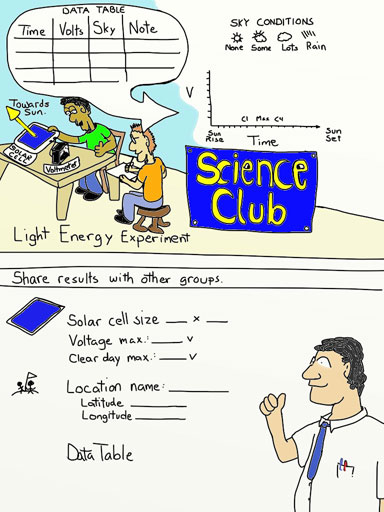 |
www.eclipse-chasers.com Weather Experiment 1 - Solar Energy Author: Bill Kramer Last update: 15 SEP 2014 BK |
Eclipse-Chasers Menu Past eclipses Future eclipses |
Science Club Project
Disciplines: Astronomy, Electronics, Physics, Weather
Solar Eclipse Experiment - Energy from the Sun
During a solar eclipse the Moon obscures the Sun reducing the energy we receive. This experiment can be done anywhere an eclipse is visible; it does not have to be a total solar eclipse (although that is the most interesting to see).
Predictions and Preparations
What are your thoughts regarding the following questions. Will the amount of power recorded during the eclipse be a direct relation to the area of the Sun obscured? How will this relationship appear if graphed?
Find out (or calculate) when the solar eclipse will be visible in your area.
Determine a meeting area for the science club to conduct the experiement.
A school parking lot or yard is recommended. Ask the principal if the school can be opened to allow access to the rest rooms.
Eclipse day.
Observe the voltage an hour or two before the eclipse starts through the end of the eclipse. Record the weather as clear, partly clouded, cloudy, raining with each voltage observation. Even if there are clouds, you should be able to register some power.
If you are lucky enough to be in the path of totality, take only one measurement during the total phase. Spend the rest of the time looking and photographing!
Create a chart showing power output recorded. Did it follow the predicted curvature? If not, why?
Looking for more weather related experiment ideas? Click here.
